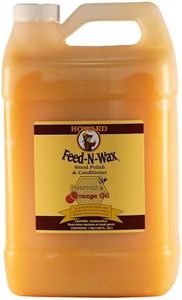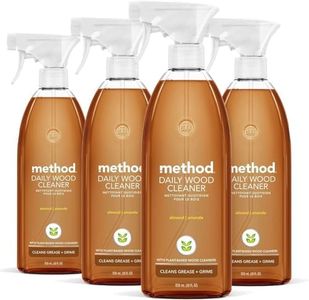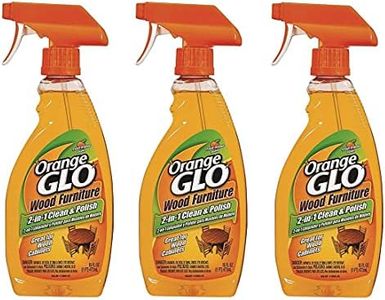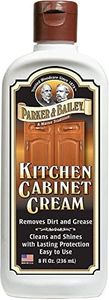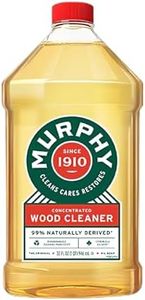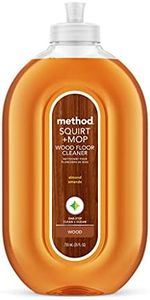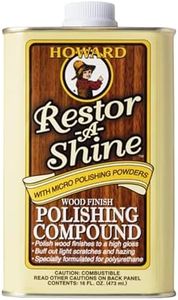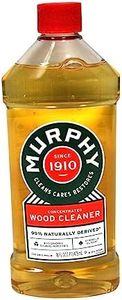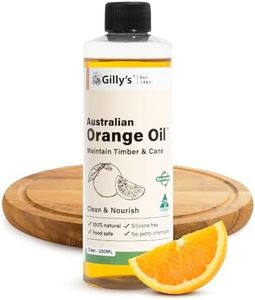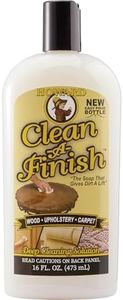We Use CookiesWe use cookies to enhance the security, performance,
functionality and for analytical and promotional activities. By continuing to browse this site you
are agreeing to our privacy policy
10 Best Wood Cabinet Cleaners
From leading brands and best sellers available on the web.Buying Guide for the Best Wood Cabinet Cleaners
Choosing the right wood cabinet cleaner ensures your cabinets stay clean, protected, and looking their best for years to come. It's important to find a product that works with the type of wood and finish you have, and one that matches your cleaning habits and sensitivity to chemicals. Understanding the main specifications can help you match a cleaner to your cabinets and lifestyle so you get the best results without damaging the wood.Cleaning FormulaThe cleaning formula refers to whether a product is oil-based, water-based, or contains specialty ingredients like natural extracts. An oil-based formula can nourish wood and hide minor scratches, making cabinets look richer, but might leave a residue if not buffed properly. Water-based cleaners are lighter and less likely to build up, making them suitable for regular maintenance without affecting finishes. Specialty ‘natural’ or ‘eco-friendly’ formulas often use plant-based ingredients and avoid strong chemicals, appealing to those sensitive to fragrances or with concerns about toxicity. Consider your cabinets’ finish, how sensitive you are to scents and chemicals, and how deeply you want to clean or condition the wood when picking the formula.
Intended UseSome wood cabinet cleaners are designed specifically for oil-treated wood, others for painted, laminated, or varnished surfaces. Using a cleaner meant for the wrong type of finish can dull the appearance or damage the surface. Read labels and think about whether your cabinets are natural wood, painted, or covered with a veneer. If unsure, pick a versatile cleaner labeled as safe for multiple surfaces, or test on a small hidden area first. Your cabinet finish and the type of mess you typically deal with (everyday dust, grease, sticky food, etc.) should guide you to the correct type.
Ease of UseEase of use includes whether the cleaner comes as a spray, wipe, concentrate, or polish. Sprays and wipes are convenient for regular, quick clean-ups, while concentrates can be more economical but need diluting and careful mixing. Polishes usually provide extra shine and protection but may be more time-consuming to apply. Think about your cleaning routine: if you want quick, simple maintenance, look for sprays or wipes. For deep cleaning sessions or conditioning, polishes and concentrates might fit better.
Residue and FinishResidue refers to any film or stickiness left on your cabinets after cleaning. Some cleaners are formulated to leave a shine or conditioning layer, while others aim to leave nothing behind. Too much residue can attract dust or look streaky, especially on darker woods or glossy finishes. If you dislike re-polishing or have a high-traffic kitchen, seek out cleaners labeled as ‘no-residue’ or ‘streak-free’. If you want extra shine and don’t mind the occasional buff, a product with some conditioning oils might be a good fit.
Fragrance and SensitivityFragrance can range from strong lemon or pine scents to completely unscented formulas. If you or anyone in your household is sensitive to smells or has allergies, consider a fragrance-free or natural-scented cleaner. Scented options can make your kitchen smell fresh but might linger if applied too heavily or on cabinets near heat sources. Think about your own preferences and sensitivities, as well as whether your cabinets are in high-use areas where strong scents could be overwhelming.

